Ventilation in the cellar: proper ventilation system technology
The safety of the items placed there, and sometimes the well-being and health of the owners, depends on how well ventilation works in the cellar. To create a properly functioning air exchange system, an understanding of certain physical processes and knowledge of the device technology are required.
We will tell you how to organize a system for extracting exhaust air from underground rooms and ensure the supply of fresh portion from the street. The article presented for acquaintance describes in detail the proven options and implementation methods. Based on our recommendations, you can perfectly equip the cellar.
The content of the article:
The task of ventilation underground
Cellars are used for long-term storage of items with special environmental requirements. The temperature in the rooms closed underground is almost always in the range from +5 to + 12 degrees Celsius.
Moisture values can vary significantly depending, as a rule, on external conditions. Using ventilation, it is possible to adjust these parameters to the required values.
Compliance with the temperature regime
The temperature regime of a properly constructed and insulated cellar is formed due to heat exchange between the walls, the floor and the air inside it. The ceiling, as a rule, is insulated, so its effect on the temperature change inside the structure is minimal.
Seasonal fluctuations in soil temperature are much less than atmospheric, which makes it possible to establish a constant microclimate in the room. Heating or cooling of air inside the cellar is slow due to the low thermal conductivity of the earth.
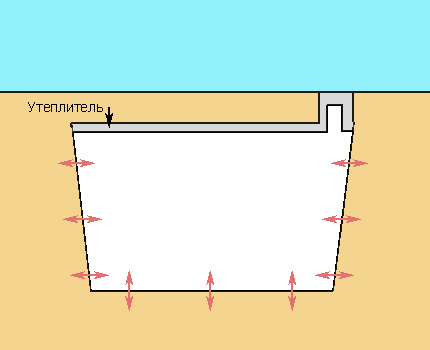
If necessary, ventilation can be used to change the temperature. Given that the structure is underground, the natural movement of air is sufficient for cooling the cellar in winter, while in the summer it is better to stimulate air flow through the operation of fans.
Solving the problem of excess moisture
The most common cellar climate problem is excess moisture. Evaporation of it using solar radiation or wind exposure is impossible, therefore ventilation is the main way to drain rooms buried in the ground.
Modes of moisture can be divided into three types:
- Moisture can enter the cellar in the form of water through walls, floors or ceilings in the absence or violation of the waterproofing layer. Most often this occurs in the spring during snowmelt.
- The internal source of moisture may be objects or products located indoors. Vegetables and fruits, especially in the initial stage of the storage process, emit fumes. Also, air humidification occurs during the fermentation process, during the respiration of bees, if the cellar is used as an omshanyk and in many other cases.
- In the spring-autumn period, when the temperature in the cellar is much lower than the street temperature, condensate is a source of moisture. Therefore, the proper use of ventilation requires knowledge of the physical laws of condensation and evaporation.
The process of removing moisture through ventilation is slow. Therefore, before starting this procedure, it is necessary to determine the cause of the humidity increase in the cellar and, if possible, eliminate it.
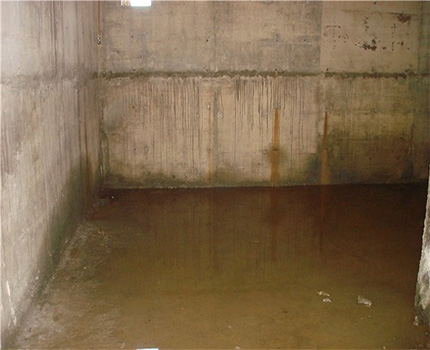
Reducing the concentration of hazardous gases
Another reason for ventilation is the need to change the chemical composition of the air. So, as a result of the storage of agricultural products, all kinds of smells are released, and when it decays, as well as when bees or fermentation tanks are kept in the cellar, carbon dioxide is abundantly released, replacing oxygen.
In poorly ventilated cellars, the accumulation of gases of a different nature of origin is possible. Excessive concentration of carbon dioxide (CO2), methane, carbon monoxide (CO) or hydrogen sulfide can cause a person to have a lack of oxygen in the blood, suffocation and, as a result, loss of consciousness. Failure to provide immediate assistance may result in death.
In the absence of internal air circulation, the concentration of hazardous heavy gases occurs at the lower point of the cellar. Therefore, if simple ventilation is sufficient to remove odors, then to reduce the concentration of gases whose specific gravity is greater than unity with respect to atmospheric air, ventilation is necessary with the air inlet at a small distance from the floor.
If there are preconditions for excessive concentration of heavy gases in the cellar, it is necessary either to ventilate the room before visiting it, or use sensors or gas analyzers to determine the need for ventilation.
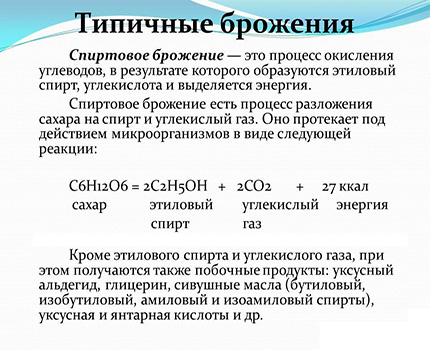
Theoretical basis for moisture removal
In that case, if the main goal of air exchange is to dry the room, then from the standpoint of physics the problem can be formulated as follows: it is necessary to perform a ventilation device in the cellar according to such a scheme that the absolute mass of moisture entering the interior is less than the outside.
Physical Description of Condensation and Evaporation
There are three main terms, the essence of which must be clarified in order to understand the nature of condensation and evaporation of moisture from air:
- Absolute humidity shows the mass of water vapor contained in one cubic meter of air. This value is expressed in g / m3.
- Relative humidity shows the ratio of the current mass of water vapor to the maximum possible, at constant pressure and temperature. It is expressed as a percentage.
- The dew point temperature indicates the temperature at which the water vapor contained in the air reaches saturation and the condensation process begins.
In relation to the cellar, the condensation process can be described as follows. At a certain temperature, air has some values of absolute and relative humidity.
With decreasing temperature, the absolute humidity value remains unchanged, and the relative humidity increases. When the relative humidity reaches 100%, the dew point occurs and the discharge of moisture in the form of condensate begins.

The evaporation process is as follows: when the air, in which the relative humidity is less than 100%, comes into contact with water, it is saturated with moisture, which can continue until the relative humidity reaches 100%. The higher the air temperature, the greater the amount of moisture it can absorb during evaporation.
Drainage in summer
In dry and hot weather, it is tempting to open a moist cellar for a while and run warm, dry air there to remove condensate. This is one of the most common mistakes leading to the opposite effect - the entry of moisture from the atmosphere into the dungeon.
For example, during the day, with an anticyclone and an air temperature reading of +32 degrees Celsius and a relative humidity of 40%, there is a feeling of air dryness. In the cellar with a temperature of +12 degrees and a relative humidity of 100% there is a feeling of dampness. However, the absolute humidity on the street with these parameters will be greater than indoors.
When ingested, warm air will begin to cool. The dew point temperature at the above street air parameters will be equal to 16 degrees. Therefore, during the period of lowering the temperature from 16 degrees to 12, moisture condensation will occur, and the relative humidity will be 100%.
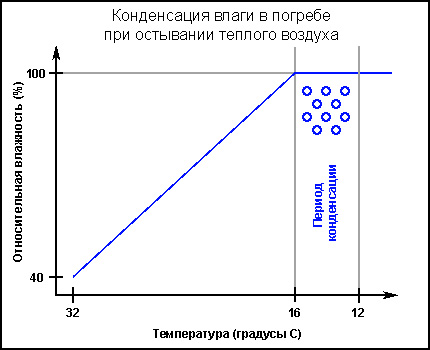
Drainage underground premises due to ventilation produce correctly for a long time. At the same time, the volume of air passing through the premises should provide minimum indicators of temperature drop, so that an evaporation process occurs at low values of its relative humidity.
However, after the end of the ventilation period due to heat exchange with the walls and floor, a gradual decrease in temperature and condensation of water in the air will occur.
Therefore, temporary removal of moisture using ventilation in the warm season is carried out in the following cases:
- the amount of moisture in the cellar clearly exceeds the amount that will be there after condensation of water from atmospheric air;
- it is necessary to create conditions for the cessation of intensive processes of decay, the spread of mold and fungus;
- it is necessary to carry out antifungal treatment, which is most effective when applying an antiseptic to dry surfaces.
Condensate removal from the cellar in the warm season is carried out by alternative methods. Moisture collection can be used with substances that have good hygroscopic (water absorbing) properties, such as ash or sawdust.
In this case, if possible, it is necessary to exclude external air exchange, if this does not contradict the observance of other parameters of the microclimate of the room.
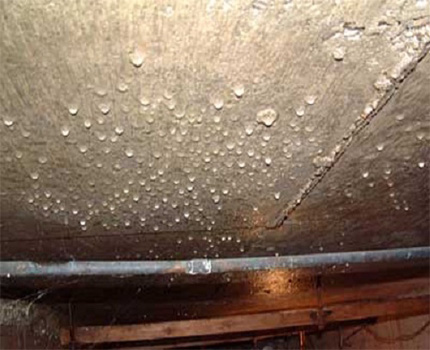
Freezing moisture in winter
At low temperatures, the absolute humidity is small. Therefore, the most effective method of removing dampness through ventilation, which is not quite correctly called “freezing,” is to ensure the flow of frosty air into the cellar.
So, even if at a temperature of -10 degrees Celsius the air has the highest possible humidity (2.36 g / cubic meter), then after it is heated in the room to +5 degrees, the value of relative humidity will become only 30%. One cubic meter of such air will be able to evaporate 4.5 grams of water in the cellar.
Since for almost any cellar it is undesirable to lower the temperature to negative values, the intake of frosty air must be carried out in small portions.
It displaces moist air from the room and mixes with the rest. Then you need to wait until the temperature rises to normal values and you can carry out this procedure again.
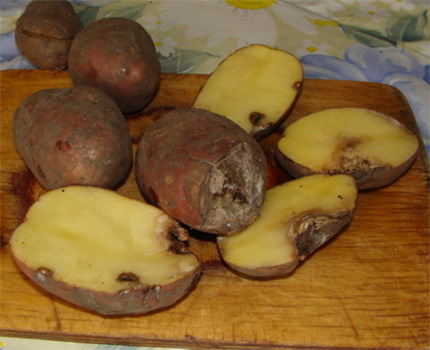
This method is effectively used in the fall after planting, opening the ventilation for some time at night.
Technical aspects of the ventilation device
Technically correct implementation of the ventilation system for the cellar, along with an understanding of the rules for its use, will ensure the necessary microclimate in the room.For small structures, you can do all the work yourself, having basic skills in the field of construction.
You can read the features of calculating the ventilation system for various types of rooms by reading featured article.
Air duct placement and maintenance
As ducts usually use plastic or metal pipes. Plastic is required to be resistant to low temperatures. This is necessary in order to avoid breaking it in the winter during mechanical stresses, such as clearing from a chicken.
Usually for purposes underground ventilation use two pipes, one of which works for the flow of air, and the second for the exhaust. The use of a single pipe results in a much smaller volume of circulating air.
It is advisable to place the exit points for the pipes at different ends of the cellar. In this case, there is uniform ventilation of the entire area of the room, without the formation of zones of stagnation of air.
The place of entry of the supply ventilation is usually located near the floor of the room, and the place of air intake is closer to the ceiling. This is necessary to comply with the physical laws of the functioning of natural air circulation. An exception is the placement of the entrance to the exhaust pipe near the floor for a more efficient outflow of hazardous heavy gases.
When placing external exits near the ground, it is necessary to monitor the snow level, since the formation of a snowdrift above the level of the pipe can cause the ventilation to stop. Humid air leaving the room causes a muzzle to form in the chimney, which can reduce the speed of air movement or even cause the ventilation to stop.
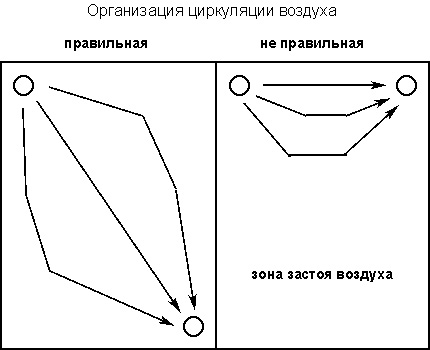
Clearing the chicken is sometimes a difficult task due to the content of ice or high-density deposits in it. To simplify the work, in autumn, a hard metal rod with a diameter of 8-12 mm can be inserted inside the pipe. In the case of complete closure of the pipe section by the kurzh, with translational movements and rotation of the rod, the procedure for cleaning the hood can be started.
If the exhaust pipe is located vertically, then under its end, located in the cellar, it is necessary to put a container into which condensate and fragments of snow and ice will fall, crumbling when the pipe is cleaned.

Natural and forced air circulation
In the vast majority of cases, the natural ventilation of small underground rooms is used. In winter, the physics of the air mass circulation process is based on the density difference between cold and warm air. To do this, the outlet from the supply pipe is located closer to the floor, and the entrance to the exhaust pipe is located under the ceiling.
The cross-sectional area of the ducts is calculated on the basis of the necessary indicator of the volume of air circulation and the estimated speed of its movement through the pipes.
To adjust the amount of ventilation, it is better to use a pipe section slightly larger than the design complete with a valve. It can be installed on both the supply and exhaust pipes.
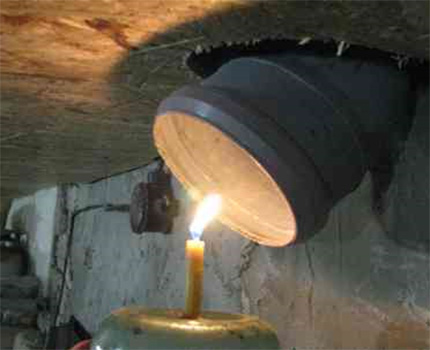
Natural ventilation does not work well in the summer, and also removes gases for a long time, with a specific gravity greater than that of ordinary air. In this case, to create an air pressure build forced ventilation by installing axial fans.
You can install fans on both the exhaust and the supply pipe, as well as both at once. With high humidity in the cellar, it is recommended not to install the fan on the exhaust pipe due to its possible rapid breakdown as a result of exposure to moisture.
Moisture removal using condensation zones
There is a way to remove moisture from the cellar in winter, which does not require pipes and openings for the inflow and outflow of air. It consists in the formation of zones for moisture condensation with its subsequent removal. This method does not apply to ventilation, but to circulation, since there is no air exchange between the room and the atmosphere.
The most elementary implementation of this method is to use a canopy outside the ajar cellar door. Warm air, penetrating from the cellar through a small opening, is cooled in contact with the cold canopy, on which condensate remains in the form of hoarfrost and chicken. Cold, dry air returns to the room.

When using this method, it will be periodically necessary to move the canopy back, close the door, knock down the muzzle and remove it to the street. As a canopy, you must use a dense rag that can withstand the weight of up to 20 kg of adhering snow per 1 square meter of its area.
Introduces the rules and technologies for the construction of ventilation systems next article.
Conclusions and useful video on the topic
Video # 1. The problem of moisture condensation in summer and methods for its elimination:
Video # 2. Assembly and installation of the fan on the exhaust pipe:
For high-quality operation of the ventilation system, it is necessary to carefully approach the issue of studying the physical fundamentals of air circulation, as well as its condensation and evaporation. The technological device for air exchange is not complicated and for small rooms its implementation is possible on its own.
Please comment on the information provided by us. You can leave a comment, ask a question and post pictures on the topic in the block below. Perhaps you want to talk about personal experience in the design of a ventilation system?

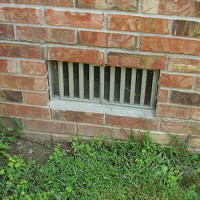 Forced ventilation in the cellar: rules and arrangements
Forced ventilation in the cellar: rules and arrangements  Cottage ventilation: options for organizing an air exchange system + device rules
Cottage ventilation: options for organizing an air exchange system + device rules 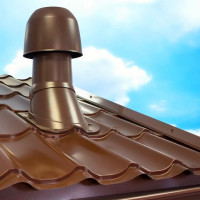 Roof ventilation made of metal: features of the air exchange system
Roof ventilation made of metal: features of the air exchange system  Hood in the chicken house: the best ways to equip the ventilation system in the house
Hood in the chicken house: the best ways to equip the ventilation system in the house 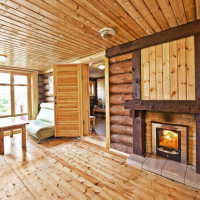 Ventilation in the dressing room: options and methods for arranging the air exchange system
Ventilation in the dressing room: options and methods for arranging the air exchange system  Ventilation in a private house: supply and exhaust systems + tips for arranging
Ventilation in a private house: supply and exhaust systems + tips for arranging  How much does it cost to connect gas to a private house: the price of organizing gas supply
How much does it cost to connect gas to a private house: the price of organizing gas supply  The best washing machines with dryer: model rating and customer tips
The best washing machines with dryer: model rating and customer tips  What is the color temperature of light and the nuances of choosing the temperature of the lamps to suit your needs
What is the color temperature of light and the nuances of choosing the temperature of the lamps to suit your needs  Replacement of a geyser in an apartment: replacement paperwork + basic norms and requirements
Replacement of a geyser in an apartment: replacement paperwork + basic norms and requirements
I have a cellar in the garage, and the ventilation in it is just some kind of nightmare. After the rain, it gets too damp there, moisture does not get drawn from there at all. I tried to clean it - it seems that nothing interferes with the air exchange, there is draft, but the humidity is still too high. A friend advised to arrange forced ventilation with a fan. I would like to ask how effective will be the use of a fan in a ventilation system?
Forced ventilation in the cellar is normal. If the natural flow of air does not come in enough, then storing food in the cellar and generally not worth anything. A similar situation is with exhaust ventilation. Forced ventilation through a special fan is the best solution.
Once you determine exactly what the problems are in the cellar, it is possible that the air flow is normal, but you have a poor natural exhaust. In this case, you need to do a forced exhaust, and not put a fan on the supply. Ideally, put two fans at once in the intake and exhaust hoods. I enclose a photo instruction.
It is strange, of course, who does the cellar do without ventilation !? If products are stored there (potatoes, carrots, onions, etc.), then it is easier to throw them away or process them right away from the garden. In addition to removing stale air, a good ventilation system also removes excess moisture. In theory, the natural ventilation option should work flawlessly in the cellar, but if it does not cope, it is better to organize a forced one. Regarding the fan: so a little power is enough. I can also advise you to make waterproofing, a very good and useful thing.
Dear Alexey, hello!
I have the following problem: an unheated utility block, a basement under it, its size 4X6m, height 2.5 m. The base blocks are the same basement walls, waterproofed, the ceiling - concrete floors, everything is plastered. Well, in the spring and summer, the ceiling and walls in drops of water - that is, problems with condensation. There is ventilation, but it was done incorrectly - 110 mm pipes (supply and exhaust, spaced in height) are mounted nearby in the middle of the basement. I tried to smash them with knees and straight pipe sections to different ends of the basement. It is late autumn. There is no water, but it is understandable - in the basement it is now warmer than on the street.
I'm going to cover the walls and ceiling with heat-insulating paint - is that right? I think that if you use polystyrene, mold may appear between the wall and the insulation sheet. Or do not do this and try to get away from condensation only by ventilation? With which everything is also not clear ... You can put a forced fan on the hood or punch an additional two holes in the basement (diagonally) for additional natural ventilation. But increasing air exchange in spring and summer, we increase the flow of warm air from the street into the cold basement ... We increase the condensate. So how to get rid of condensate - it is not clear .. 🙁
In a good way, it is necessary to cool the incoming air with the simultaneous removal of precipitated water from it, but this is essentially an air conditioner - a little expensive for the basement. I’m sitting, racking my brains, can you recommend something?
Good afternoon, Arthur.
We will begin to solve your problem by checking the sufficiency of the cross-sectional area of the supply / exhaust pipes. In other words, we determine which pipe diameter is needed.
The cross-sectional area is simplified by the following relation: each square meter of the basement floor needs 25 square centimeters of the cross-sectional area of the pipe.
Your basement has a floor area of 24 square meters. meter. So the cross-sectional area of the supply / exhaust pipe = 24 square meters. meter × 25 square meters see = 600 sq. centimeters.
First, we define the square of the radius of the pipe using the well-known formula - S = πR × R.
Then R × R = 600 / 3.14 = 191 sq. see Extracting the root, we get - the radius is 13.8 cm, and the diameter is 27.6 cm.
As you can see, one of the problems is the almost triple understated diameter of the pipes.
You did not attach a ventilation scheme - therefore, I attached a screenshot of how it should look. Please note - the supply pipe through the hozblok should be minimal. If possible, bypass it altogether. The inflow above the floor is a maximum of 500 mm. The protrusion of the hood from the ceiling is determined by the design of the latter - pay attention to the condensate drain from the chimney.